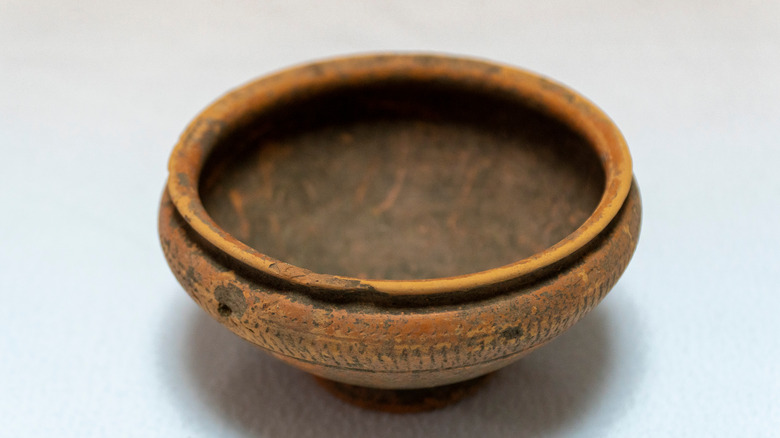The Ancient Greek Origins Of The Word 'Casserole'
When you think of the word casserole, what comes to mind? Meat and potatoes? Ground beef and pasta? Mac n' cheese? Yes, please! Americans have happily adopted and adapted this international classic, which can be found in countless variations around the globe.
Rich in flavor and variety, the casserole is a combination of meat, potatoes, or vegetables that are slow-cooked, producing a rich flavor profile guaranteed to please any palette. The ingredients depend on the country of origin. In Greece, you have the pastitsio (a layered macaroni and beef combination full of cheese) or moussaka (minced beef or lamb and eggplant in a layered tomato stew). Some might consider the Turkish imam bayildi a vegetarian casserole. In Italy, there's lasagna. France has poulet a la Normande or ratatouille, which could be a type of casserole too.
In the United States, casseroles in Pyrex dishes have been enjoyed at potluck dinners for decades, and the mix of ingredients, herbs, and spices that feed family traditions are scattered across hundreds of casserole recipes like green bean casserole or yellow squash casserole you can recreate at home. But what are the origins of this modern-day casserole? How did we get the word and how did we get the dish?
Ancient Greek cookware and the etymology of 'casserole'
The etymology of the word casserole can be traced back to Europe, particularly ancient Greece. According to Masterclass, casserole likely comes from the ancient Greek word 'kuathion,' which means "little cup." Kuathion likely morphed into the Medieval Latin word "cattia," which described a frying pan or saucepan, according to What's Cooking America. From there, Masterclass says, the word morphed into the Old French word "casse," meaning "pan" and then turned into the diminutive form "casserole." By the 18th century, English speakers had adopted the word and used it to describe a dish of rice and meat baked in the oven. Today, the word refers to a wide variety of mixed vegetable and meat dishes slow-cooked in the oven as well as the bakeware these foods are prepared in (per What's Cooking America).
Dr. Vicky Vlachou, a member of the archeological department at the Ecole française d'Athènes, discovered casserole dishes amongst a variety of clay pottery and cookware at an archaeological site on the Greek Island of Tinos dating back to the 4th century B.C. She says that these dishes were used in burial rituals. Prominent members of society would gather for festivals and religious ceremonies where they would sacrifice animals and then eat their meat, according to Kelly Wrenhaven in her book, "Greek Gods, Heroes, and Worship." Alongside the meat, Vlachou explains that locals would cook and prepare a variety of dishes in these clay pots.
It may seem like this is all ancient history, but modern-day, one-pot casseroles — the dishes and the name — from this ancient Greek origins.

